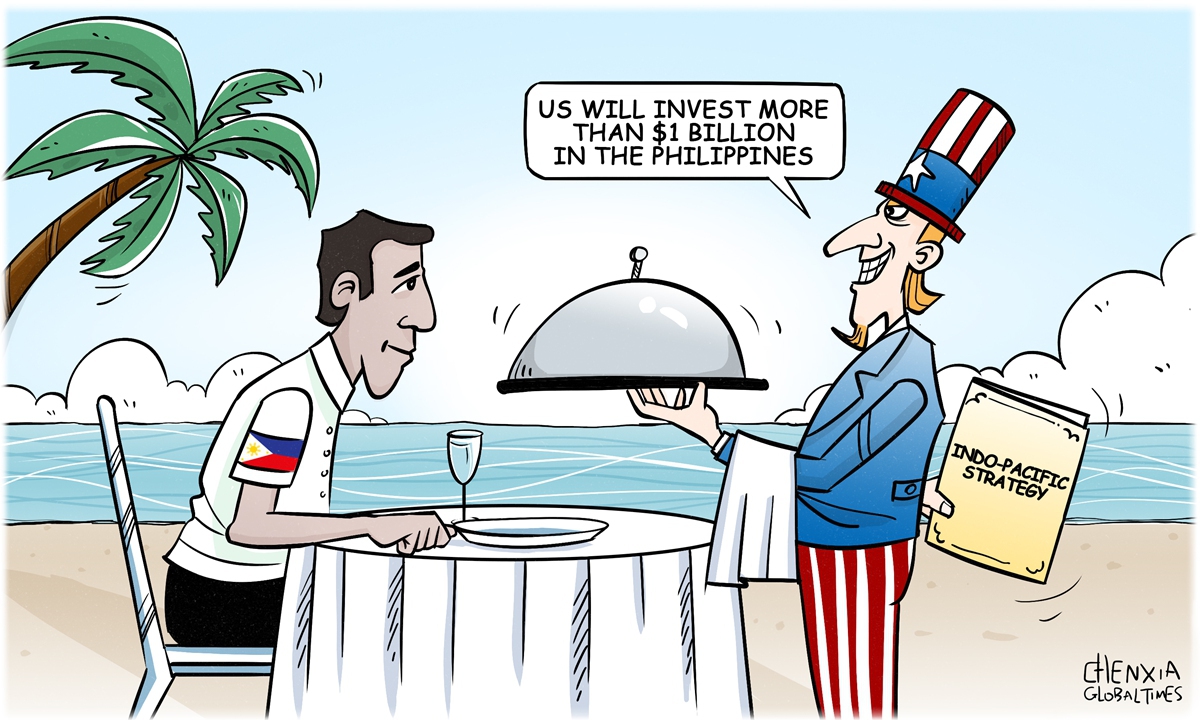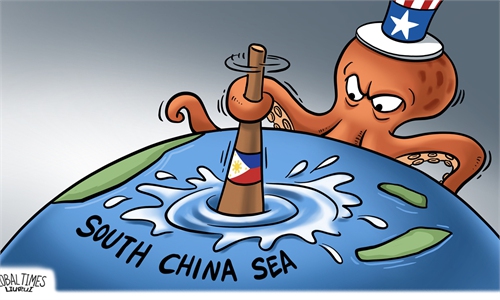
Illustration: Chen Xia/GT
The Philippines appears to be standing at a critical crossroads in its economic development, facing significant and complex choices that will not only shape the country's economic future but also have wide-ranging implications for the regional economic landscape.The Philippines, the US and Japan held inaugural discussions on the Luzon Economic Corridor on the sidelines of the Indo-Pacific Business Forum in Manila, the Manila Standard reported on Thursday.
It was the first meeting of the Luzon Economic Corridor Steering Committee since US President Joe Biden announced last month a set of infrastructure projects in the Philippines under the Partnership for Global Infrastructure and Investment (PGII).
There is no denying that the Philippines is in dire need of infrastructure development. So, if the US can actually support the construction of the Luzon Economic Corridor with funds or other practical financial actions, it will certainly be beneficial to the Philippine economy, and we'd welcome it.
However, ever since the launch of the PGII in 2022 by the US and G7 partners, it has been touted as an alternative to the China-proposed Belt and Road Initiative (BRI). This raises concerns about whether the US support of the Philippines' infrastructure is aimed at escalating regional tensions with China and using that as a pretext to interfere in the South China Sea situation.
Whatever the case, it is imperative for the Philippines to recognize that the core of the US strategy toward China is to squeeze China out of the global industrial chain through advocating for supply chain "decoupling." This approach will inevitably pose a severe dilemma for the Philippine economy.
On the one hand, Manila has an opportunity to enhance economic partnerships and benefit from regional economic integration by collaborating with neighboring countries, particularly China.
On the other hand, the Philippines could be caught up in a strategic rivalry led by the US, potentially leading to a situation where it is forced to "decouple" from China.
Poised at this crossroads, the Philippines needs to make a cautious choice between its short-term interests and long-term development.
The Philippines ended 2023 on a high note, being the fastest-growing economy across Southeast Asia with a growth rate of 5.6 percent. However, there are still some vulnerabilities in the Philippine economy, as shown by the recent steep depreciation of its currency. The peso slumped to 57.96 per dollar in April, the weakest since November 2022.
Addressing these vulnerabilities necessitates a more profound integration of the Philippines into the regional economy to attain sustainable long-term development, rather than following the US strategic needs of "decoupling" and "breaking chains."
This is because as a member of ASEAN, the Philippines has benefited a lot from regional economic and trade cooperation in terms of market opportunities and industrial chain development.
In particular, the China-ASEAN Free Trade Area has not only boosted trade but also strengthened regional economic integration and resilience. ASEAN has been the largest trading partner of China for four consecutive years, while China has been the largest trading partner of ASEAN for many years.
Given this backdrop, the Philippines' choice is crucial for regional cooperation. It is hoped that Manila can collaborate with other ASEAN members and China to foster regional economic momentum and achieve mutual development, rather than becoming a divisive factor. By strengthening cooperation, the Philippines could make a positive contribution to regional stability and peaceful development, as well as enhancing the endogenous impetus of its economy and its resilience against external risks.



